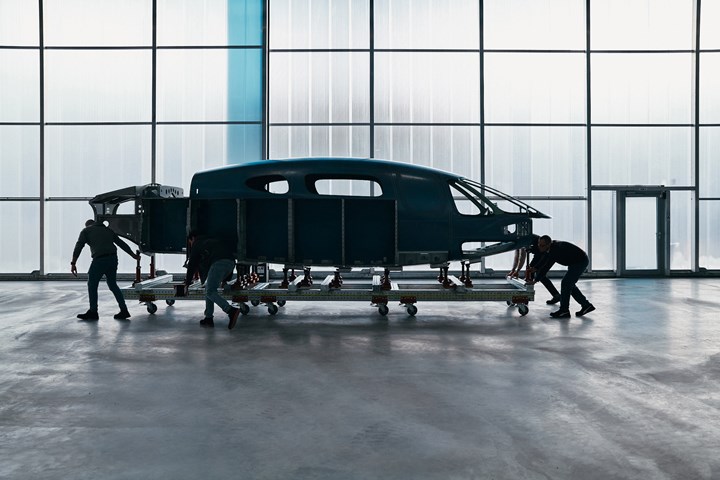Lilium begins Lilium Jet aircraft production
Following DOA approval, Lilium shifts from the design phase to industrialization, including fuselage matching and joining and a ramp-up of parts production from Tier 1 aerospace suppliers.
Lilium (Munich, Germany) has begun production of the Lilium Jet, following the arrival of the first Lilium Jet fuselage at the company’s final assembly line. In parallel, Lilium’s Tier 1 aerostructure suppliers — Aciturri and Aernnova, both of which have extensive metallic and composite capabilities — are ramping up production of parts and systems for the electric vertical takeoff and landing (eVTOL) aircraft.
With the start of production, Lilium has hit a watershed moment, shifting from the design phase to industrialization. In the next step, the fuselage will be matched and joined with the aircraft’s canards and main wings. Production of the Lilium Jet is taking place at the company’s state-of-the-art facilities in Wessling, Germany. Lilium’s testing and manufacturing center, propulsion and aerostructures facility, final assembly building, and the newly constructed battery assembly building and logistics hub, where aircraft parts are readied for integration on the final assembly line, are all located alongside one another. In total, Lilium’s facilities cover an area of 175,000 square feet.
“To see the first aircraft fuselage on the final assembly line ready to join up with the canard and wings is a proud moment for everyone involved in our mission to make aviation sustainable,” Klaus Roewe, CEO of Lilium, says. “We firmly believe the Lilium Jet will usher in a new era of sustainable regional mobility, offering the highest safety standards, as well as superior comfort, unit economics and customer experience.”
The start of assembly follows Lilium’s design organization approval (DOA) by the EASA, confirming that Lilium has the organization, procedures, competencies, resources and demonstrated rigor required to certify aircraft according to high safety standards.
Related Content
-
Composites end markets: Automotive (2024)
Recent trends in automotive composites include new materials and developments for battery electric vehicles, hydrogen fuel cell technologies, and recycled and bio-based materials.
-
Composites opportunities in eVTOLs
As eVTOL OEMs seek to advance program certification, production scale-up and lightweighting, AAM’s penetration into the composites market is moving on an upward trajectory.
-
Vertical Aerospace eVTOL prototype goes down during uncrewed test flight
The U.K. company has confirmed the Aug. 9 accident that resulted in significant aircraft damage and potential setbacks.













